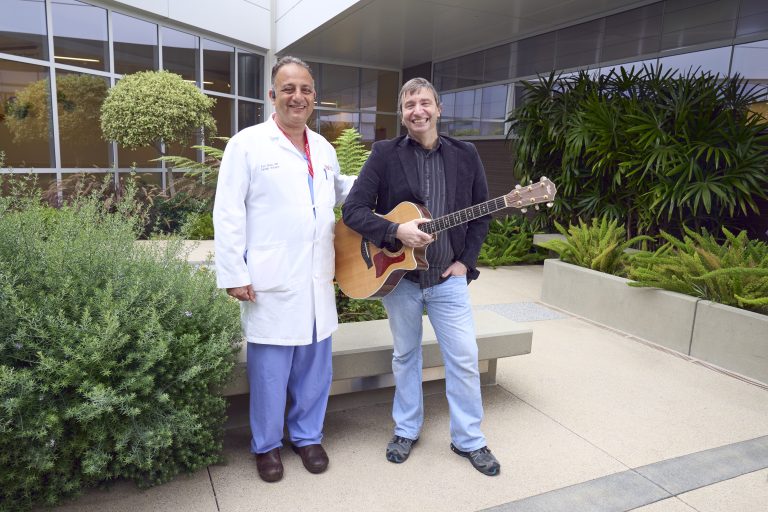We sat down with the leaders of the three institutional entities that comprise Cedars-Sinai Health System: Thomas M. Priselac, president and CEO of Cedars-Sinai Health System; Craig Leach, president and CEO of Torrance Memorial Medical Center; and Lori J. Morgan, MD, MBA, president and CEO of Huntington Health. Hear how they are navigating the ongoing financial pressures in healthcare.
What are some of the causes of the current financial challenges facing healthcare organizations, and how can they be addressed?

Craig Leach:
At Torrance Memorial, we’re addressing the financial viability piece in a similar way to what we’ve done in the past: approach it from an economic standpoint, looking at every possible way to reduce spending while continuing to enhance our quality and value. One example is reviewing every supply and purchased service expense to look for appropriate savings opportunities. Another example is reviewing every request for new or replacement staff to ensure that we are operating efficiently. We’re also looking at ways to continue to improve the entire revenue cycle process. And then from a capital standpoint, we are evaluating every building project or equipment purchase to see which ones might be appropriate to delay. Also, like Huntington and Cedars-Sinai, we’re seeing the same types of labor shortages in nursing and many other areas.

Lori Morgan, MD, MBA:
Over the past few decades, all our institutions have had to deal with challenges that arose from time to time: periodic labor shortages, national economic changes such as inflation and other crises. What’s different now is that these are all occurring at the same time. In addition, these are all happening at a time when COVID-19 has depleted the reserves of many hospitals: emotional reserves, resiliency reserves and financial reserves. So, while in the past these big challenges have come up one at a time, we’ve never had to manage them all at the same time. That’s what’s different.

Tom Priselac:
As Lori said, unlike in the past where there were issues to be dealt with for a period of time, there’s a sense of permanence to some of the things that she described. Most notable among them are staffing shortages and limits on the revenue received by healthcare organizations compared to projected increases in expenses. And that affects the way we need to address these issues.
For example, staffing shortages are not going to go away. Looking at the long term for healthcare overall, the education pipeline to increase the available workforce to meet demand is woefully underdeveloped at the same time the workforce is aging and increasing numbers of staff are retiring.
With regard to payments to physicians and healthcare facilities, there is a significant gap between what it costs hospitals and physicians to care for people covered by Medi-Cal or Medicare and what those government programs pay. And the scope of this issue is big: In California, at least 30% of residents are covered under the Medi-Cal program. It affects hospitals in Southern California even more: While Los Angeles County has 25% of the state’s population, it has 40% of the state’s Medi-Cal recipients.
So what are our institutions doing about all of this?
Number one, all three institutions remain completely focused on the issue of quality. Central to all our decisions—including how to optimize value and efficiencies—is making sure we preserve the quality that all three institutions are known for.
As a result, all three organizations have been taking a look at other structural aspects in our respective organizations to maintain our quality, continue serving our communities and respond to the economic challenges we face. This includes things like reducing the costs of supplies and equipment, as Craig mentioned, and adjusting how each organization is staffed in non-direct patient care areas.
In addition to these things that each organization is doing individually, the three organizations are using this opportunity to continue to take advantage of having become a health system. Among our goals for the coming year is to continue to identify significant potential savings for the three organizations.
If you take a step back and look at the whole thing, what’s at the root of the situation facing healthcare providers and consumers in terms of some of these issues of cost and payment?
Lori Morgan, MD, MBA:
To put it mildly, healthcare financing is a bizarre system. If you were going to sit down with a blank piece of paper and try to design an appropriate payment system for healthcare, it would definitely not be what we have. It was flawed in its initial design to begin with, mostly because the various components and incentives are not aligned. For example, historically for hospitals and physicians there were more incentives for volume than for quality. That approach does not benefit patients. While there have been several changes in the payment system to focus more on quality than volume, these have been incremental, and we are still a long way from having a payment system that aligns incentives between payers and healthcare organizations to optimize for quality, appropriate care and community needs.
Craig Leach:
Tom mentioned the issue of underpayment from government programs like Medi-Cal and Medicare. Here at Torrance Memorial, if you take the number of Medi-Cal patients that we see along with the Medicare patients we see, around two-thirds of our patients are government-funded. Certainly, one of the key reasons that we’re having financial challenges is the underfunding on the government side. And as we try to compensate for this underpayment, it’s very difficult to go to commercial payers to try to get them to make up for the underfunding.
Tom Priselac:
I do think we’re approaching the end of what is theoretically possible under this flawed healthcare financing system we have in our nation, but we are not close to reaching agreement on a new way that hopefully would be more rational and helpful toward achieving important goals with regard to equity, affordability and consistent high quality around the country.
Part of the problem is that we really don’t have a mechanism in place—at the federal, state or local level—to consider these questions in a holistic way and make decisions accordingly.
So, for example, education policy and labor policy for healthcare are totally disconnected from healthcare financing and payment policy discussions. And there are many similar examples where various aspects of healthcare policy are considered in different silos, when they should all be considered in an integrated way.
The result of our current fragmented system starts to show up first at the local level, and that’s what we’re seeing here in Los Angeles and throughout the nation. Rural hospitals are collapsing, and in urban areas—including here in Los Angeles—we’ve seen a number of hospitals close. There are also other hospitals that are forced to operate below their capacity. They may have a bed and a patient who needs that bed, but they literally can’t afford to hire the staff to operate the bed. And so, the functional capacity of hospitals in Los Angeles has shrunk significantly and continues to shrink.
Why are costs at some hospitals higher than at others for similar procedures?
Craig Leach:
The cost that comes with operating a healthcare facility that treats more complex problems and offers a wider variety of services includes a lot of infrastructure around the complexity of these services. A lot of the smaller hospitals that do less complex kinds of care don’t need to pay for much of that additional infrastructure, such as experts available around the clock for heart surgery, neurosurgery and stroke programs, for example.
Lori Morgan, MD, MBA:
As a trauma surgeon, I’m very familiar with the readiness component that you need to operate a hospital’s trauma center. At any given moment, 24/7, you must have a trained trauma surgeon in-house waiting and ready to provide immediate care when the next trauma patient comes in.
But it’s not just the surgeon who needs to be available in an instant. It’s the extra nurses to care for the trauma patient when they first arrive, the CT tech, the MRI tech, the respiratory therapist, anesthesiologist and so on. There’s a whole infrastructure. And when a hospital offers other advanced emergency services, like a comprehensive stroke center or a STEMI Receiving Center for heart attack patients, there is built-in cost in having all these people available immediately. When a hospital provides these higher levels of services, this is what you must have so that you can meet the needs of the patients in a very compressed time period.
Another example of additional infrastructure costs for teaching hospitals is graduate medical education. As Tom pointed out earlier, training physicians so that we have enough to care for future generations is directly related to accessibility and affordability. And providing the support system and physician-teachers for these residents adds costs to teaching hospitals that smaller hospitals do not have to bear.
Tom Priselac:
At the end of the day, the differences between prices for the same service is a function of the differences in each hospital’s mission—and that starts with the scale, scope and complexity of the patient care that’s provided. The other variable, as we’ve mentioned earlier, is differences in the payer mix, given the shortfall in government payment for Medi-Cal and Medicare.
When you put all that together, it shouldn’t be surprising that there are significant price differences.
An additional difference between hospitals that affects their prices is whether they conduct research and its scope. Although most of the research that gets done at Cedars-Sinai and at other academic medical centers is largely funded either by government entities such as the NIH or philanthropic dollars, some of the research infrastructure is funded by the hospital itself. These expenditures ultimately represent a hospital’s societal investment in the future.
At Cedars-Sinai, we have a decades-long history of research investments that have changed how medicine is practiced, resulting in improved quality or lowering the cost of care. Our ongoing current research is having a similar impact. For example, our scientists have developed some remarkable treatments for people suffering from inflammatory bowel disease. That will significantly enhance quality of life for people who suffer with that condition and will keep them out of the hospital because they will avoid flare-ups.
In addition to saving and improving patients’ lives, these developments also save the nation billions of dollars in costs when compared to the time before these treatments were developed.










